Traditional Italian Christmas Foods
Dec 09, 2023
This post may contain affiliate links. Please read our disclosure policy.
What do Italians eat for Christmas dinner? Like any other time of the year, it depends on the region. We go through each Italian region discovering what traditional Italian foods are eaten at the most wonderful time of the year!
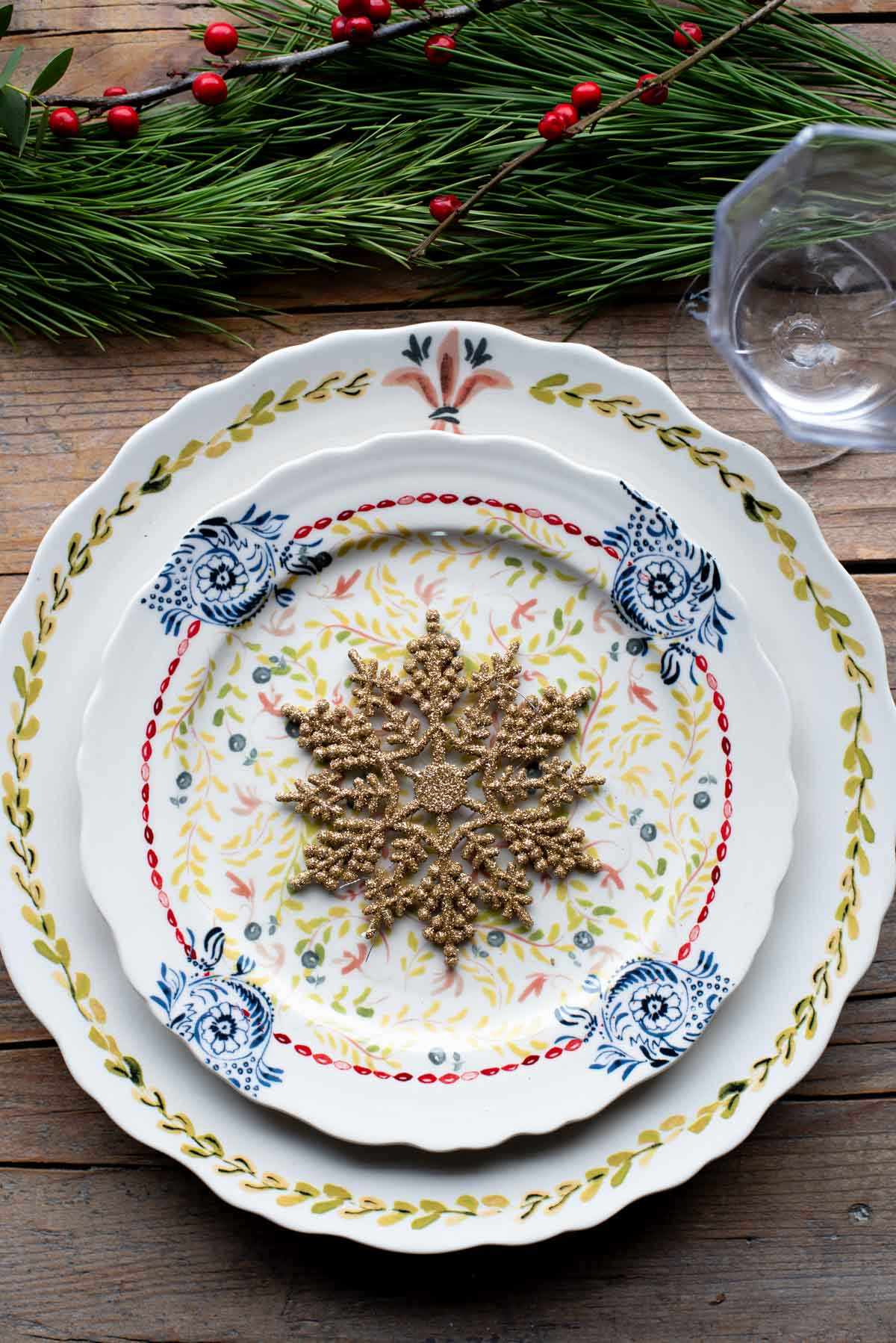
Christmas (Natale) is the most magical time of the year and throughout Italy, this is considered the most important holiday of the year, even by those who are not religious.
Cities are filled with decorations, lights, Christmas trees, and nativity scenes. In the mountainous areas, Christmas markets enliven the main streets, and torchlight processions are taking place on the ski slopes. In other parts of the country, there are plenty of religious events, fireworks and live nativity scenes.
The traditional Italian Christmas is spent with the family, unwrapping presents and indulging in long, hearty meals followed by card and board games (as well as lengthy family discussions).
But, what do Italians eat for Christmas dinner?
Well, there is no simple answer to this question because the typical Italian Christmas menu varies depending on the region.
There is, nonetheless, one common thing in Italian Christmas traditions (aside from the usual debate between those who prefer Panettone or Pandoro): Christmas Eve dinner is meatless. Other than that, dried fruit usually makes an appearance and, of course, pasta somehow is always part of the meal. So, let’s take a look at traditional Italian Christmas food by region.
In northern Italy, probably due to the lower temperatures, Christmas lunch is rich and substantial, based on braised meats and stuffed pasta. Among the typical Aosta Valley appetisers there are the delicious Crostini with honey and Mocetta (a tasty cured meat flavoured with mountain herbs), while the main course is the traditional Carbonata (not to be confused with Roman Carbonara), prepared with strips of beef marinated in red wine with aromatic herbs, and served with polenta.
In Piedmont, it’s not Christmas without Agnolotti del Plin, a kind of delicious ravioli filled with meat and vegetables. A little curiosity: the term Plin, which translates as pinch in the Piedmontese dialect, indicates the characteristic gesture of pinching the dough to enclose the filling. The menu also includes mixed boiled meats and Zabaglione, a frothy custard cream served with the prestigious Piedmontese hazelnuts.
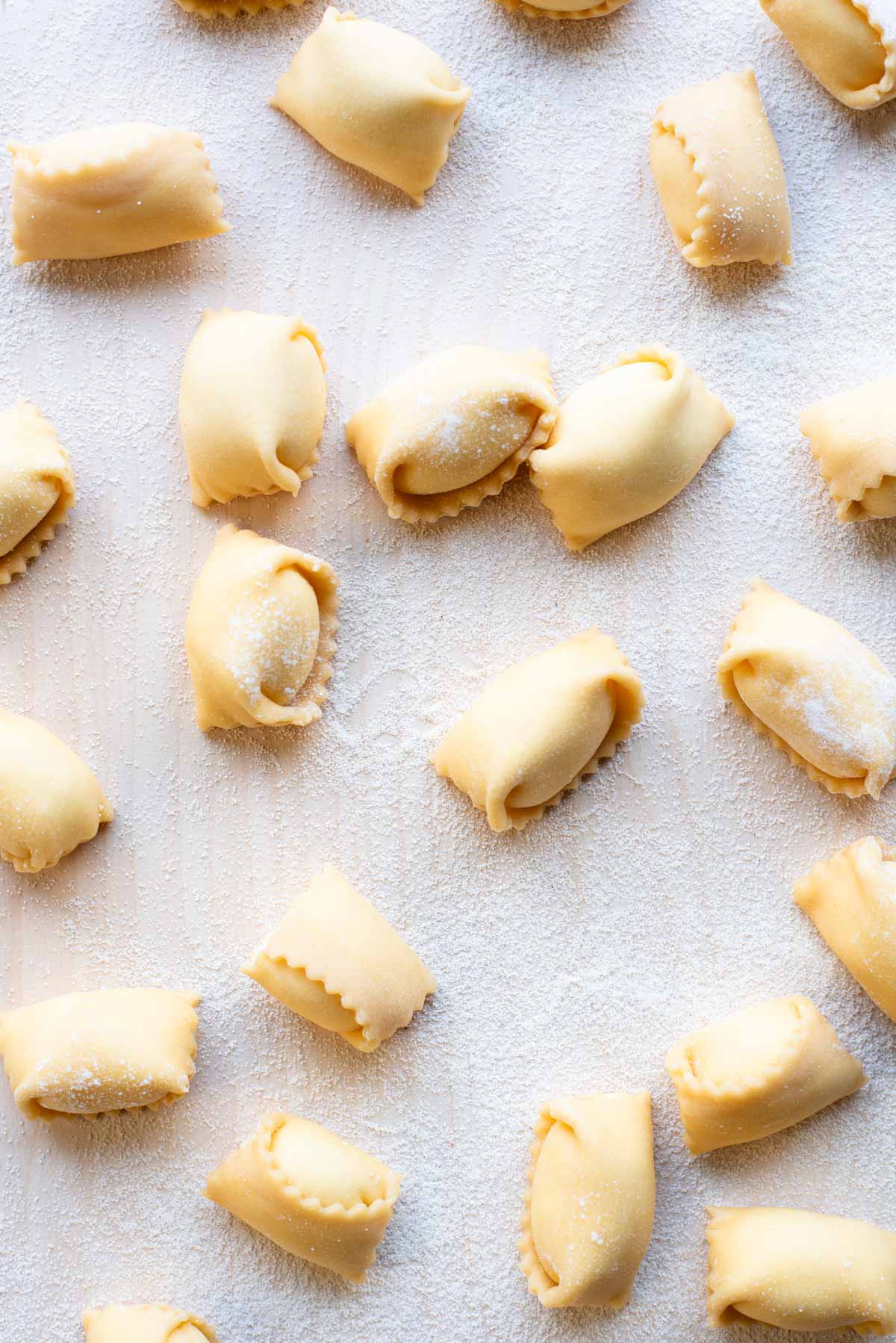
Pin this now to find it later
Pin ItIn Lombardy, one of the most traditional dishes is baked eel, but stuffed capon is also very popular, while in Veneto, Christmas lunch calls for polenta served with cod and boiled meats. These two regions have always played a key role in Italian Christmas food traditions. It is indeed here that Panettone and Pandoro, the two most famous (and buttery) Italian Christmas desserts, originate.
In Liguria, the Christmas menu includes boiled capon or stuffed guinea fowl and Genoese Panforte, a local variant of Panettone, less buttery but rich in candied and dried fruit and fennel seeds.
In Friuli, the most traditional dish is Bravada and Muset, a hearty turnip and Cotechino soup served with the ubiquitous polenta, and tripe with sauce and cheese. For dessert, Gubana is a must (a fragrant and boozy dessert filled with walnuts, almonds, raisins, honey, wine, and rum).
In the Dolomites of Trentino-Alto Adige, Christmas lunch starts with a plate of Canederli (balls made of stale bread, speck, flour, and cheese and seasoned with spinach or porcini mushrooms), followed by roast venison. Lunch ends with the traditional Strudel or Zelten.
Heading south towards central Italy, we cross Emilia Romagna. Here, the main character on Christmas Day is pasta, preferably fresh and stuffed. There are plenty of choices: Tortellini or Passatelli (strictly in broth), Tagliatelle, Lasagne or pumpkin and aromatic herb Tortelli.
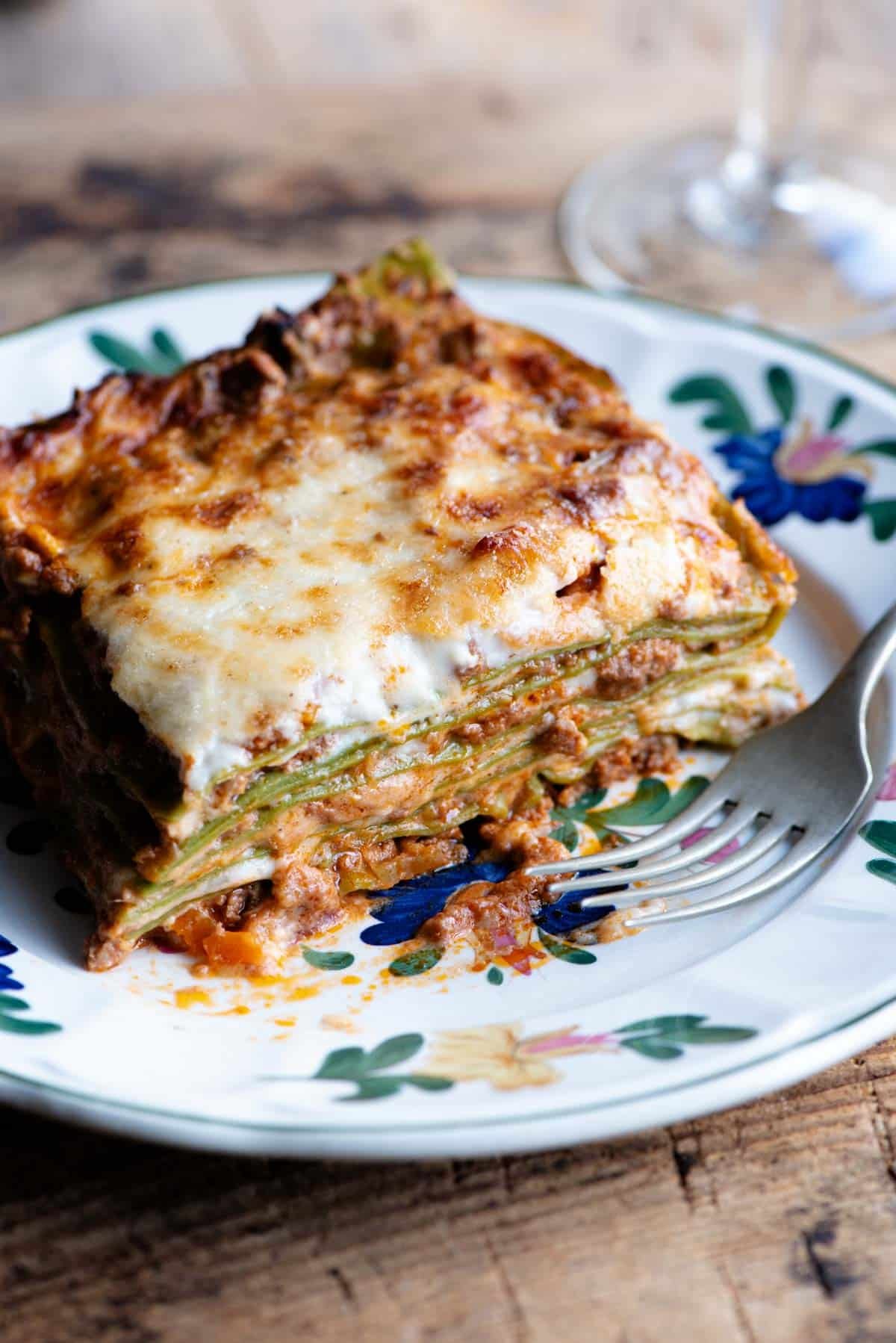
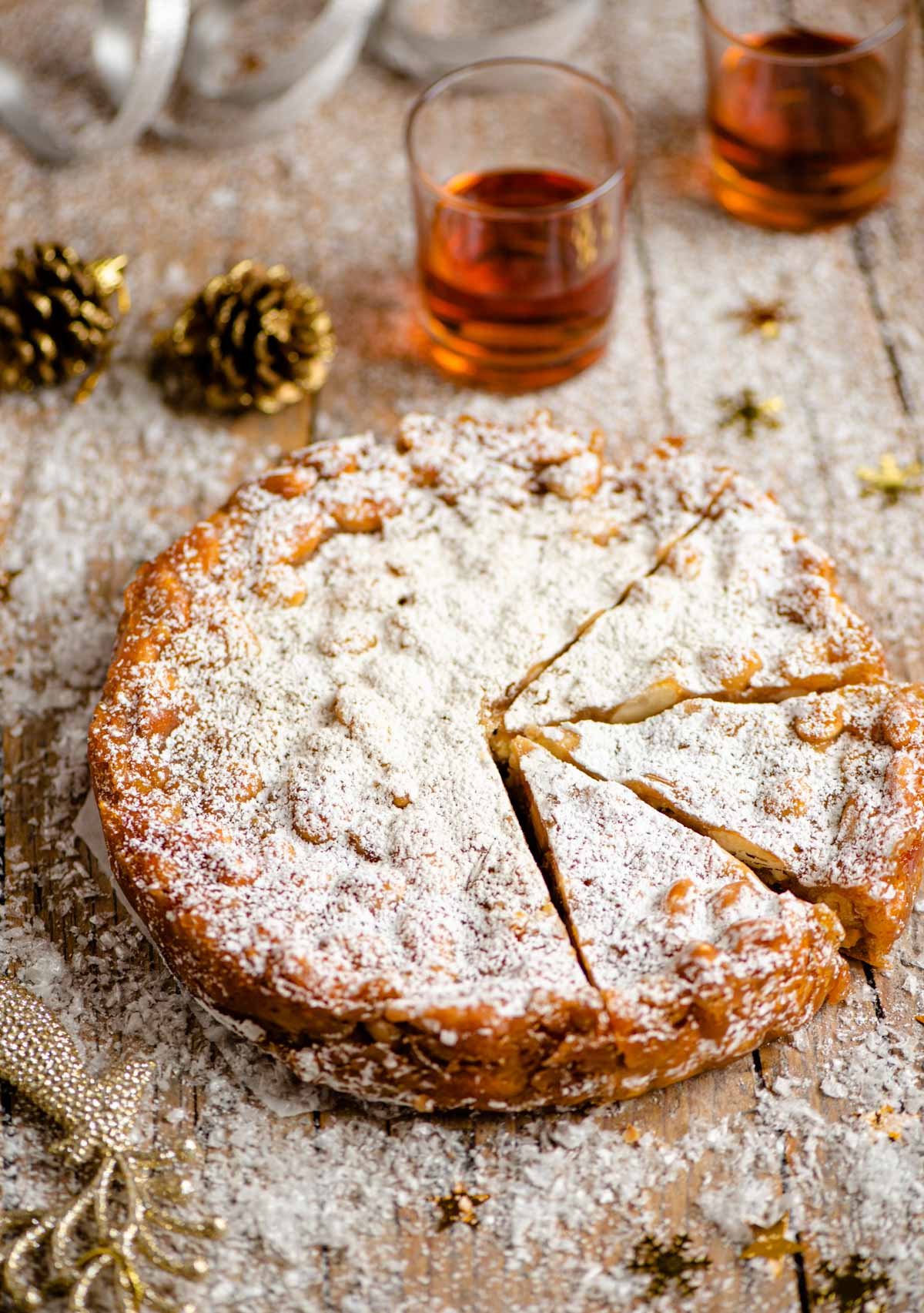
Tuscans love to serve roast guinea fowl or stuffed capon as a main course, while the typical desserts come from Siena: the classic Panforte, made with dried fruit, and the mouthwatering Ricciarelli almond biscuits.
In Lazio, on Christmas Eve, dinner includes a variety of fried foods and cod. For Christmas Day, according to ancient peasant traditions, on the table, you’ll find Cappelletti in broth, boiled meat, and roast lamb with potatoes.
In Molise, people like to serve soups based on cardoons or fish broth, followed by cod, roasted with breadcrumbs, garlic, bay leaves, oregano, raisins, pine nuts, and walnuts.
In the Marche, Umbria, and Abruzzo, there is a strong influence of the nearby regions, and the typical dishes include Cappelletti in broth, Lasagne, capon, and roast lamb. But a special note goes to the Vincigrassi (literally translating as ‘beat the fat’) a traditional baked pasta from the Macerata area, made of various layers of cheese and a special ragù with different types of meat.
Christmas Italian dishes from the South generally involve a lot more vegetables and fish. In Naples, and throughout Campania, capon is a must for lunch, while spaghetti with clams and Capitone is served on Christmas Eve. The use of Capitone, a female of the eel, has somehow a religious meaning and symbolises the victory of men over Satan. For dessert, it wouldn’t be Christmas without Struffoli (fried honey balls).
If in Basilicata, the menu includes vegetarian soups, turkey broth, and cod, in Calabria, flavours are more intense and lunch is made with roast goat meat and Pasta China (baked pasta timbale with veal meatballs, spicy salami, sweet Provola, Caciocavallo, and Pecorino cheese).
In Puglia, in addition to the classic pasta with turnip greens, it’s tradition to serve roast eel and fried cod, but roast lamb with Lampascioni (some local slightly bitter onions) is also very popular.
In Sardinia, the most classic Christmas dish is ravioli (called Culurgiones de Casu) filled with potatoes, mint and Pecorino cheese and served with tomato sauce, while in Sicily the menu includes chicken in broth, herring and orange salad, and Sfincione, a typical onion-based pizza. Obviously, to finish you can’t miss a good pistachio nougat or Cuccidati (fig cookies).
Don’t forget that, in Italy, celebrations are not limited to one day but go all the way from December 24th to January the 6th, the feast of the Epiphany ‘which takes away all the festivities’ as the saying goes!
On the night of January 5th La Befana (the Italian Christmas Witch) flies through the night on her broomstick delivering sweets to all the good children who wake up in the morning with stockings full of delicious treats.
In Tuscany, Befanini cookies are made during this time to celebrate the La Befana and the end of the Christmas celebrations.

There are, of course, many more beautiful Italian Christmas foods to explore (it’s impossible to name them all). Check out our Italian Christmas recipes collection to discover more delicious foods to make this year.
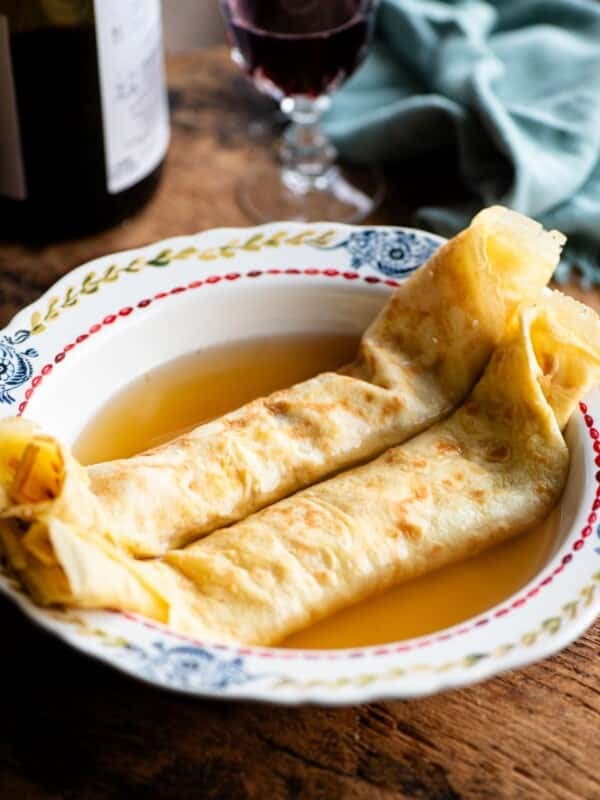
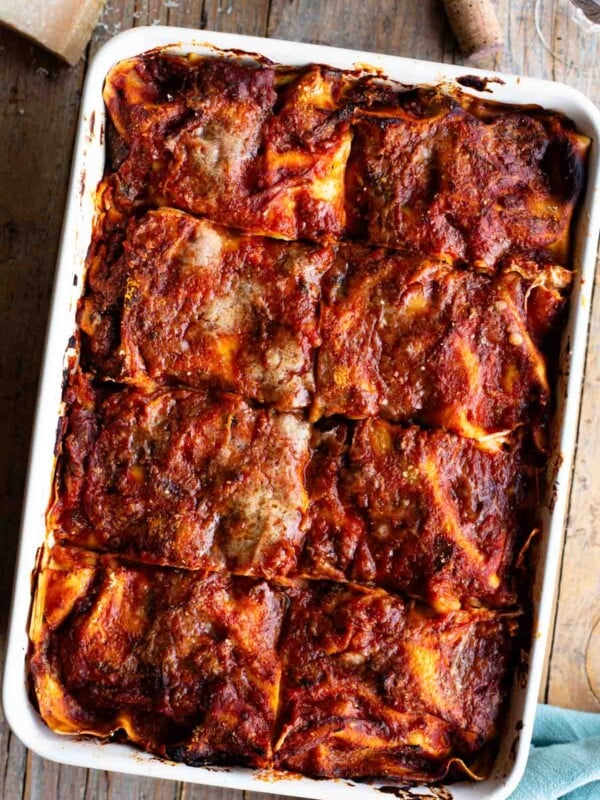
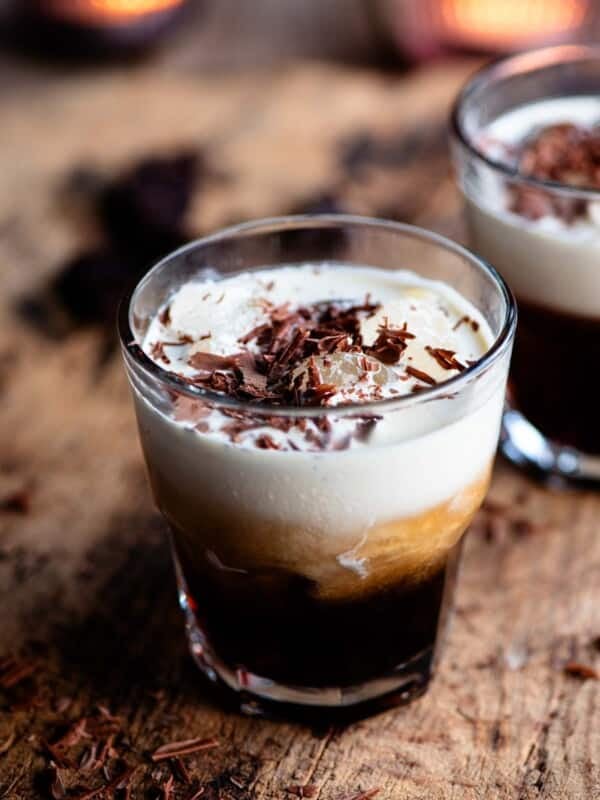
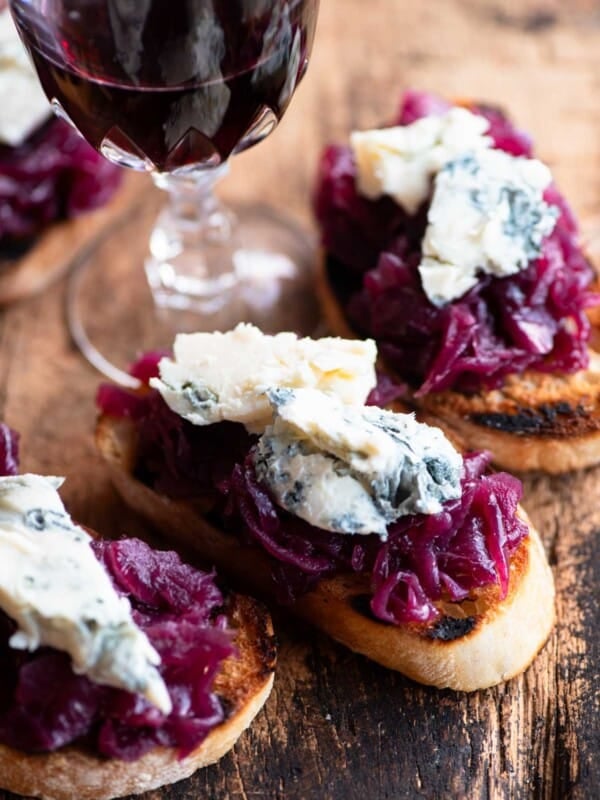









Thank you Emily for this post – it is this time of the year that I miss my beautiful Mamma more than I can say and many of these recipes have a special place in my heart because she made so many of them. My parents were born, raised and married in a little town called “Sersale”, just outside of Catanzaro in Calabria. She was one of those amazing Italian Mammas that needed no recipe or measuring utensils to create fabulous mouthwatering meals. I’ve been fortunate enough to have grown up watching her making these recipes (whether I wanted to or not at the time), so even without written recipes, I’ve been able to make these foods for my husband and kids. I love that you have so many regions covered and I look forward to making many of them. God Bless and have a lovely Christmas!
Ciao Lina, I love that you have such wonderful memories cooking with your Mamma. It’s such a precious thing to have all that knowledge, wisdom and love passed down to you that you now share with your own family. Thank you so much for sharing this and I hope you have a wonderful Christmas, Emily.
What a delightful article. This year, my Christmas lunch will be a trip through the regions of Italy! Thank you.
Thanks so nice to hear Franca, I hope you have a wonderful Christmas! 🙂
What about Calabria?
Ciao Celeste, Calabria is mentioned just before Puglia. Sorry, I forgot to highlight it so maybe easily missed.